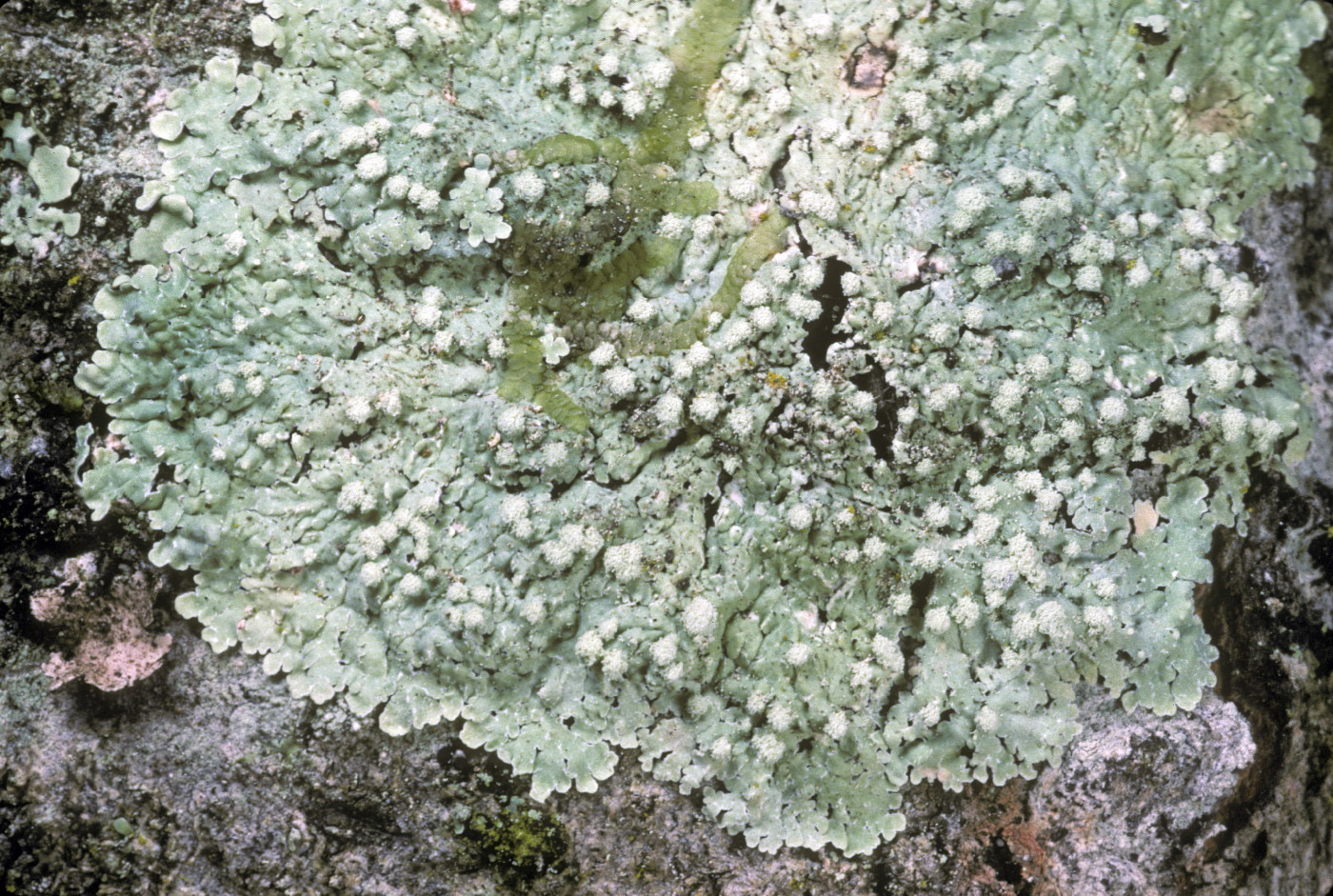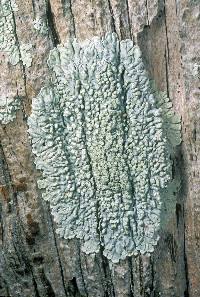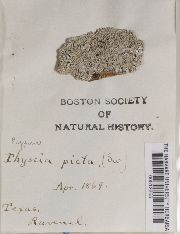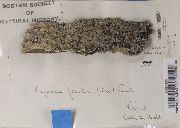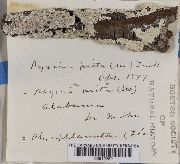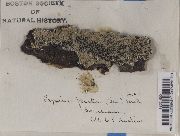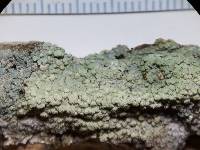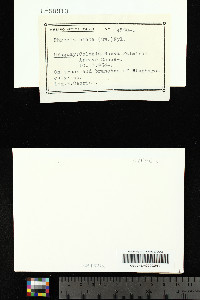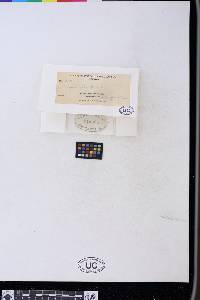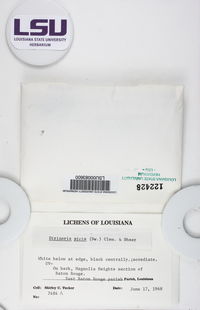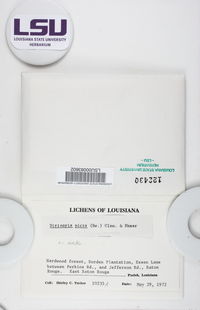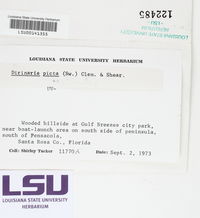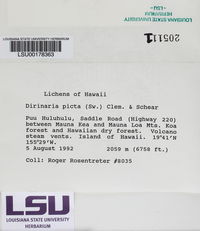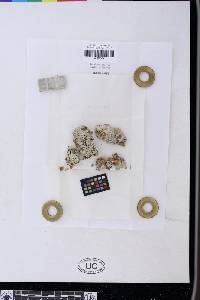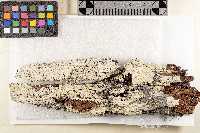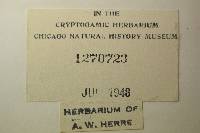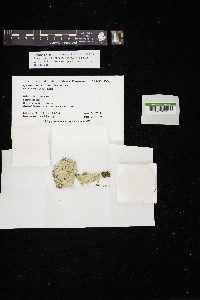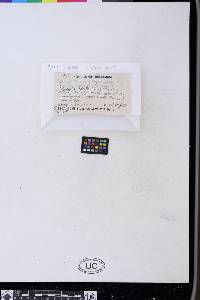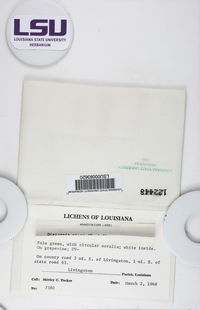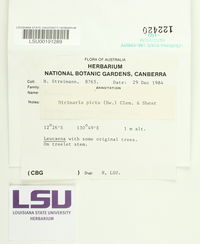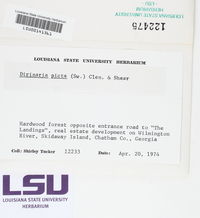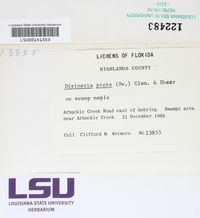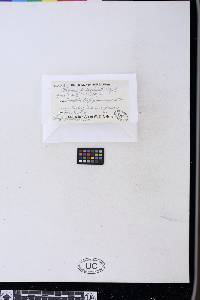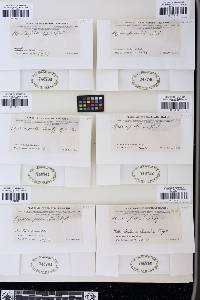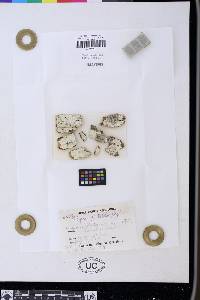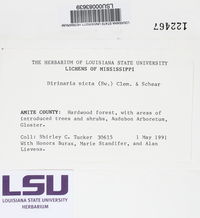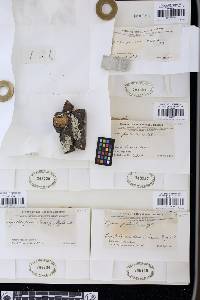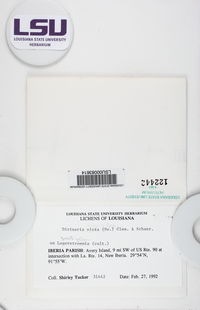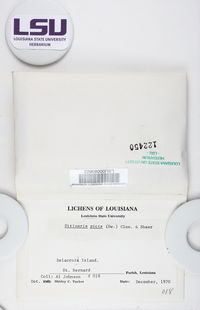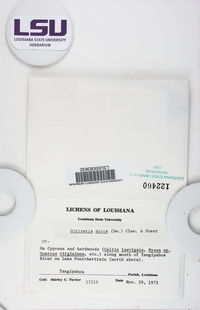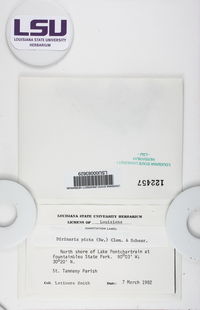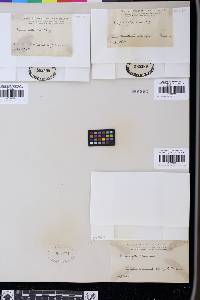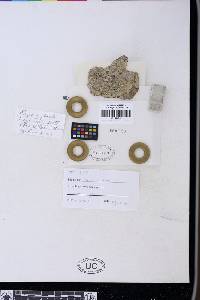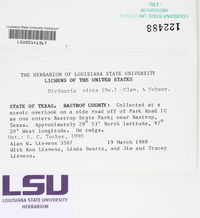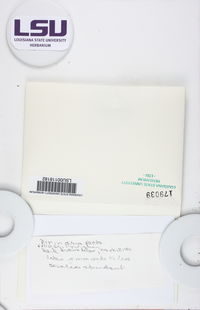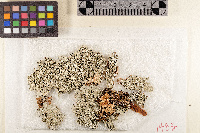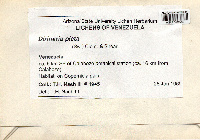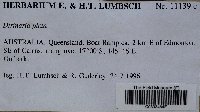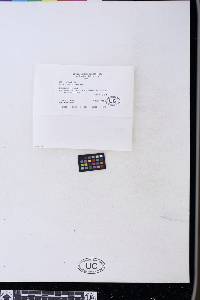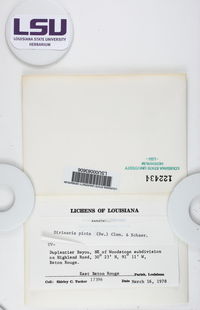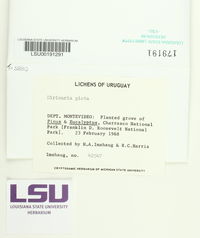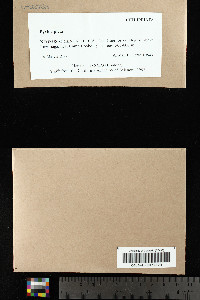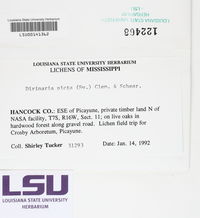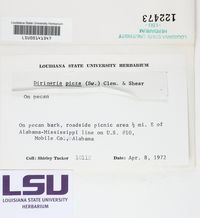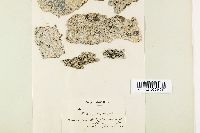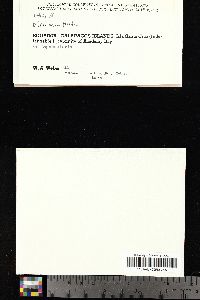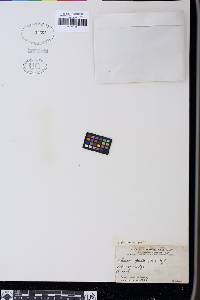
Consortium of Lichen Herbaria
- building a Global Consortium of Bryophytes and Lichens as keystones of cryptobiotic communities -
- Home
- Search
- Images
- Species Checklists
- US States: O-Z >
- US National Parks
- Central America
- South America
- US National Parks
- Southern Subpolar Region
|
|
|
|
Family: Caliciaceae
Powdery Medallion
[Dimelaena picta (Sw.) Trevis., moreHagenia picta (Sw.) Bagl., Lichen pictus Sw., Lobaria picta (Sw.) Raeusch., Parmelia picta (Sw.) Ach., Parmelia plumosa Taylor, Physcia picta (Sw.) Nyl., Physcia picta f. coccinea Müll.Arg., Physcia picta f. erythrocardia (Tuck.) J.W. Thomson, Physcia picta f. isidiophora Nyl., Physcia picta f. picta (Sw.) Nyl., Physcia picta var. coccinea Müll.Arg., Physcia picta var. endochroma H. Magn. & D.D. Awasthi, Physcia picta var. erythrocardia Tuck., Physcia picta var. flavicans Müll.Arg., Physcia picta var. picta (Sw.) Nyl., Physcia plumosa (Taylor) Nyl., Pyxine picta (Sw.) Tuck., Pyxine picta var. erythrocardia Tuck., Squamaria picta (Sw.) Ach.] |
Nash, T.H., Ryan, B.D., Gries, C., Bungartz, F., (eds.) 2004. Lichen Flora of the Greater Sonoran Desert Region. Vol 2. Thallus: foliose, appressed to agglutinated up to the lobe tips, 2-8 cm in diam., dichotomously pinnately or subpinnately lobate lobes: radiating, confluent, flat or convex but sometimes concave near apex, 0.5-1 mm wide, not flabellate towards the lobe tips upper surface: gray, bluish gray or almost white, shiny, not (or very faintly) pruinose, sorediate soredia: farinose, in laminal, globose soralia pseudocyphellae: present, but not distinct, marginal, rarely also laminal, usually restricted to the peripheral parts of the lobes, rarely reticulately confluent medulla: white, the lowest part seldom orange, if so, only at the lobe tips lower surface: black in center, paler towards lobe tips, erhizinate Apothecia: very rarely present, laminal on thallus, 0.7-1.3 mm wide disc: jet-black, not pruinose ascospores: brown, 1-septate, narrowly ellipsoid, 14-18 x 5.5-7.5 µm Pycnidia: immersed in warts conidia: bacilliform or fusiform, 3-4 x 0.9-1.1 µm Spot tests: upper cortex K+ yellow, C-, KC-, P+ yellow; medulla upper and lower part K-, C-, KC-, P- Secondary metabolites: upper cortex with atranorin; medulla with divaricatic acid and few terpenes in low concentration. Substrate and ecology: on bark (predominantly on Cocos) and wood, along or near beaches World distribution: in all tropical regions of both hemispheres Sonoran distribution: especially in thorn forests and deciduous forests of Baja California Sur and Sinaloa. Notes: Only with some hesitation are the Sonoran specimens identified as Dirinaria picta. It is most likely that this common species does occur in the Sonoran region, but we have seen no typical material in the many collections from there studied for this paper. |
|
|
|
Powered by Symbiota

